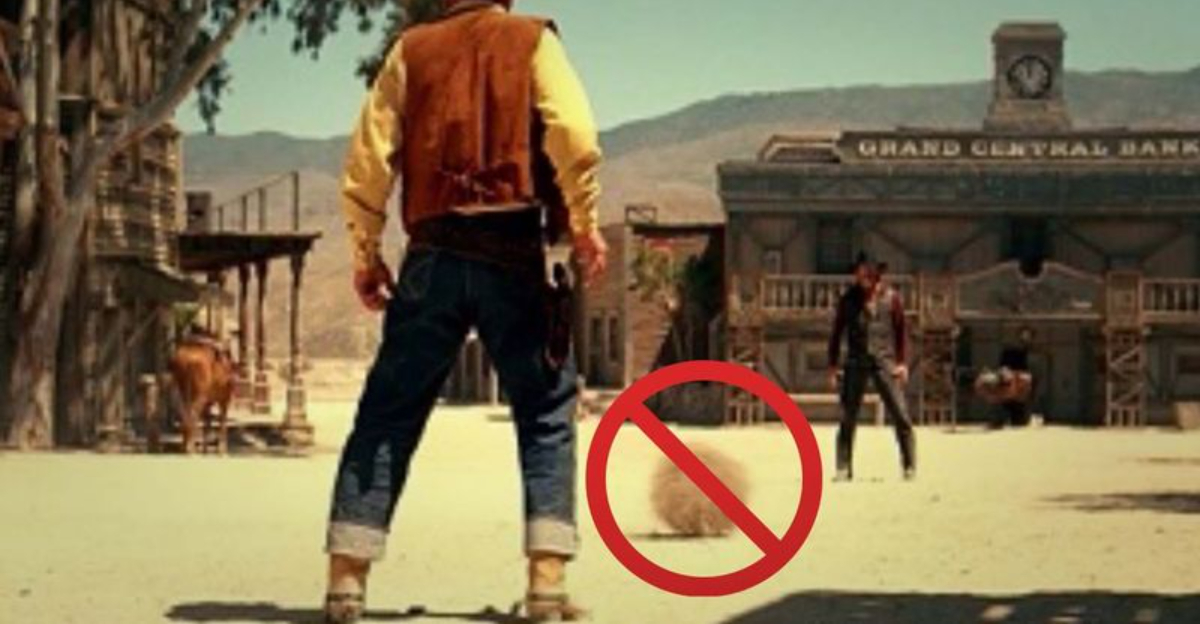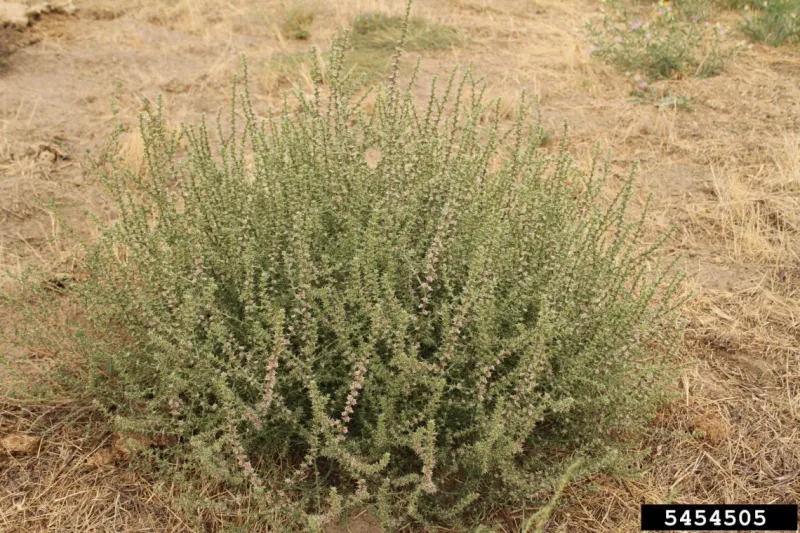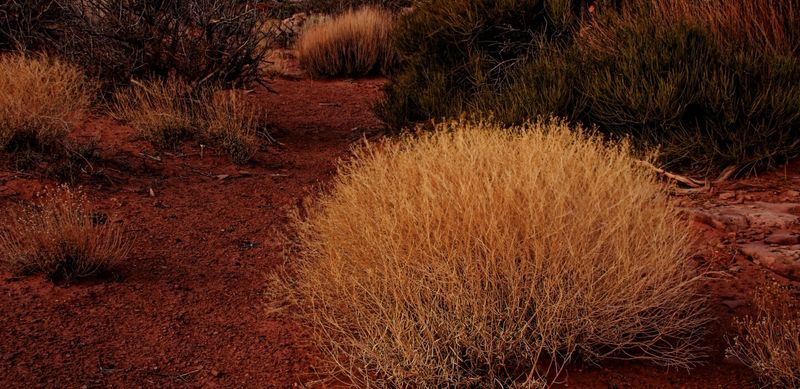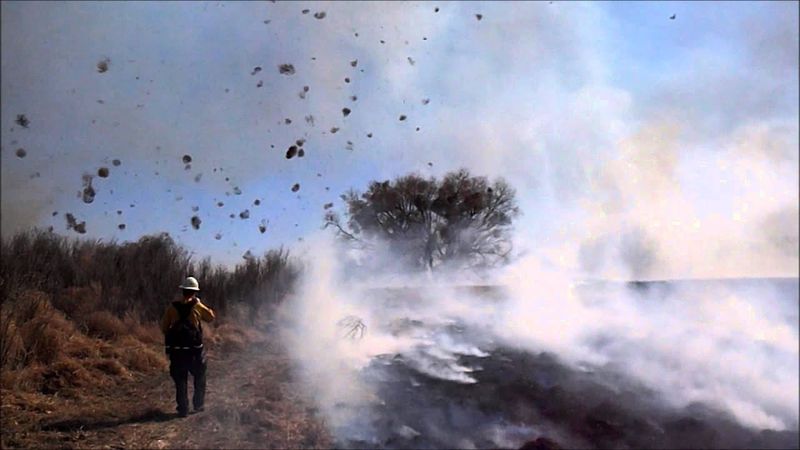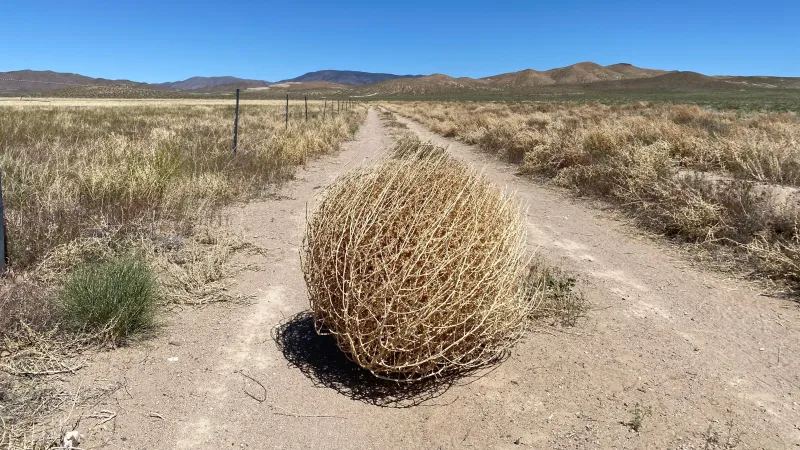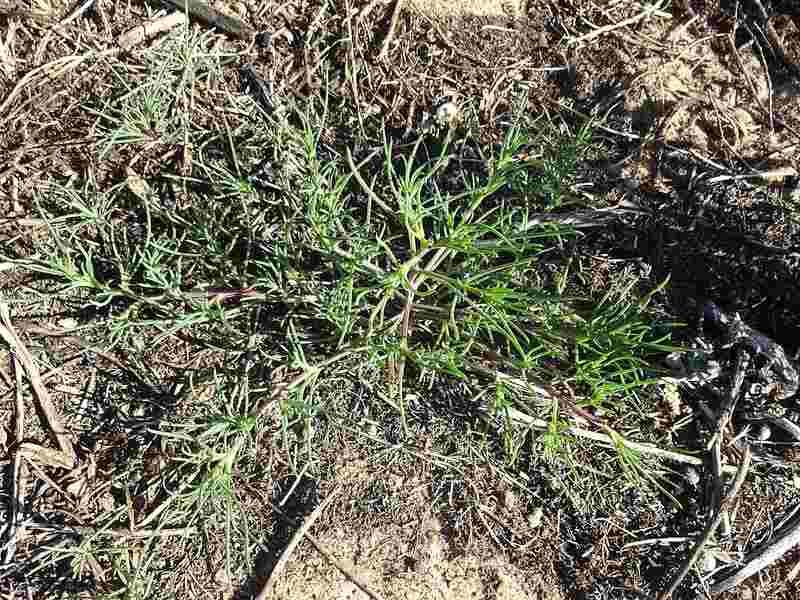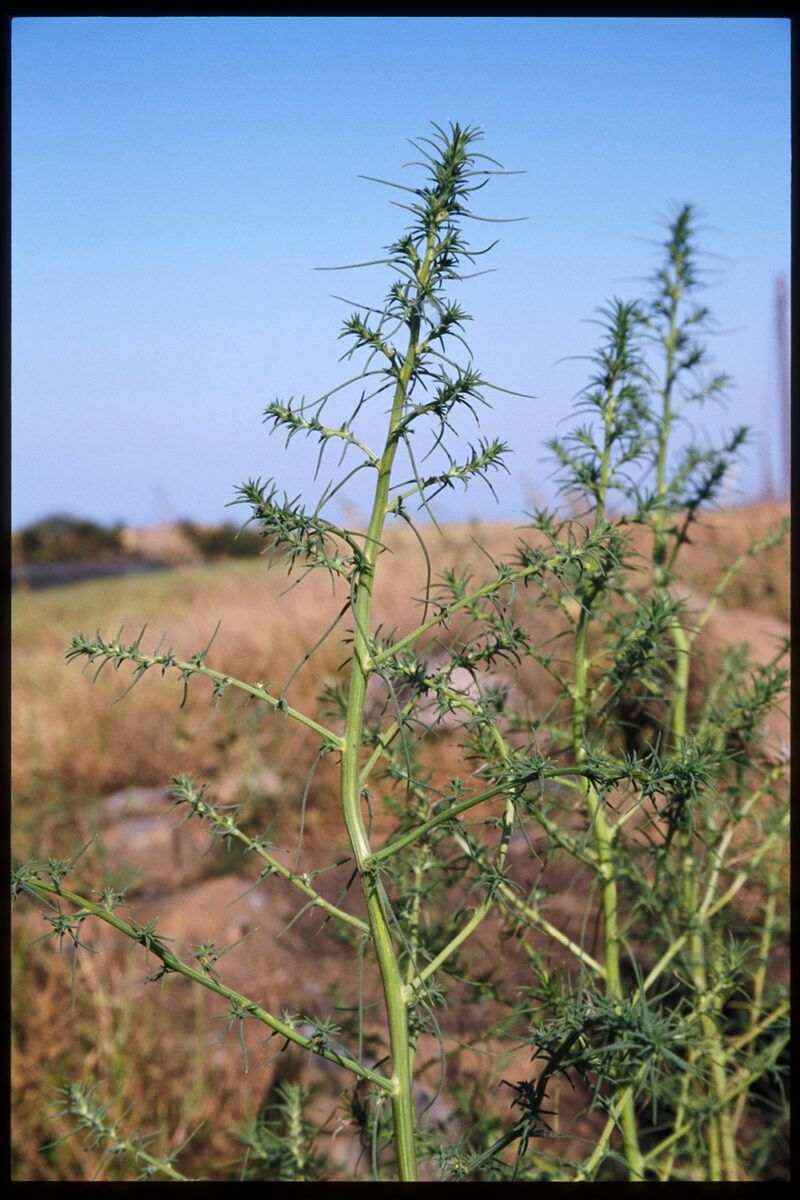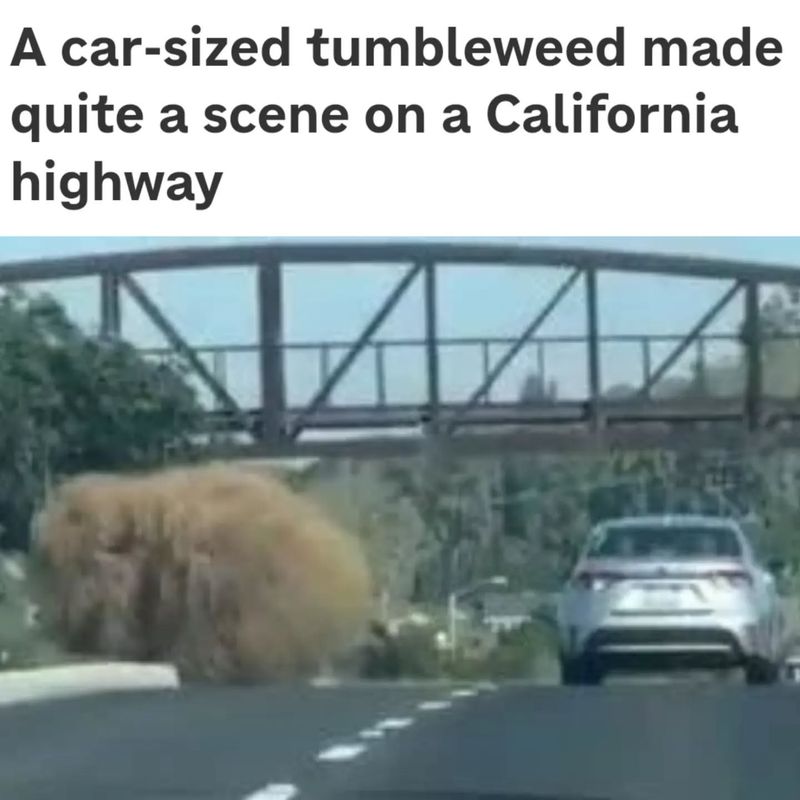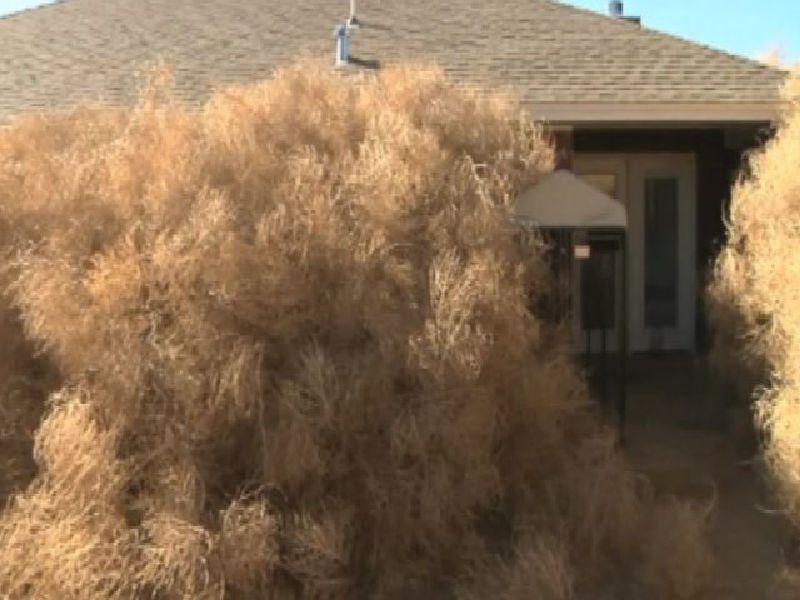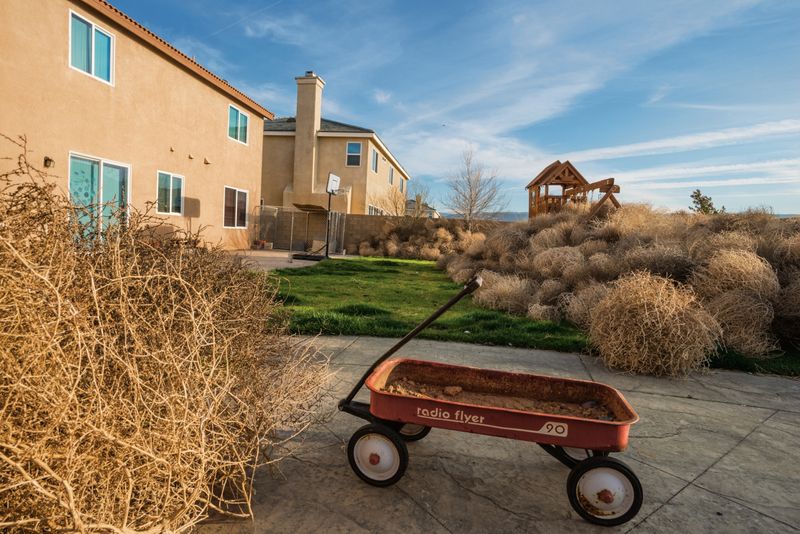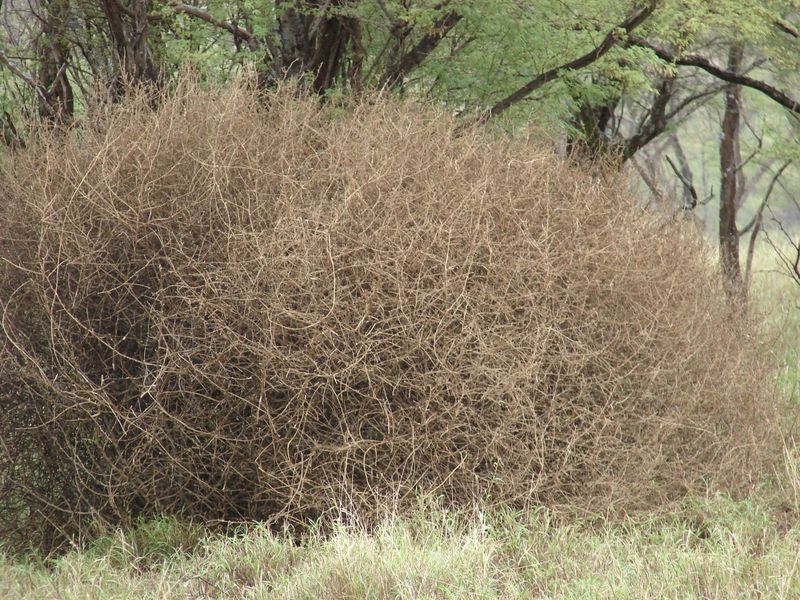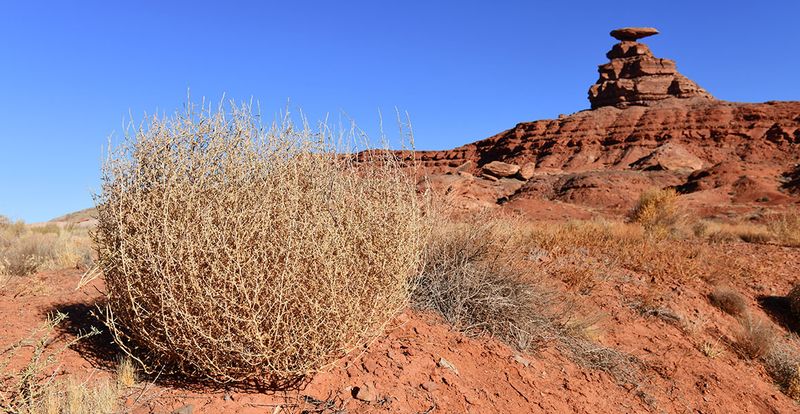When you think of the Wild West, tumbleweeds rolling across dusty streets might come to mind. But here’s the shocking truth: these iconic plants weren’t even in America during most of the cowboy era!
These Russian invaders quietly snuck into our landscape and rewrote history through Hollywood magic.
Let’s unravel the surprising story of tumbleweeds and discover why they’re actually imposters in Western mythology.
1. Foreign Invaders, Not American Icons
The quintessential symbol of the American frontier actually hails from the Eurasian steppes. Russian thistle (Salsola tragus), what we call tumbleweeds, originated thousands of miles away in Russia and Central Asia.
Farmers across the American West would be shocked to learn they’re battling plants that traveled farther than most pioneers. These botanical immigrants crossed oceans before establishing their new home on American soil.
While cowboys were taming the frontier, these plants were still growing in their native Russian habitat, completely unknown to Americans who would later mistake them for indigenous flora.
2. Late Arrivals to the American Story
Tumbleweeds made their American debut around 1873 in South Dakota—not during the height of gunslinging cowboys and gold rushes. Russian immigrants accidentally introduced these plants when flaxseed shipments arrived contaminated with thistle seeds.
The timing couldn’t be more ironic. By the time tumbleweeds began spreading across American landscapes, stagecoach robberies and frontier justice were already fading into history books.
These botanical stowaways established themselves just as the true Wild West era was winding down, making their cinematic association with old saloons and dusty showdowns historically impossible.
3. Too Late for the Real Frontier Days
Historically speaking, tumbleweeds missed the party. The classic Old West period—spanning roughly from the end of the Civil War in 1865 to the closing of the frontier in 1895—was nearly complete when tumbleweeds began their takeover.
Famous outlaws like Jesse James and Billy the Kid never saw these rolling plants during their notorious careers. The iconic cattle drives of the Chisholm Trail happened without a single tumbleweed crossing the path.
Gold rush miners, pioneer wagon trains, and the Pony Express all operated in a tumbleweed-free America—a fact that contradicts nearly every Western film you’ve ever seen.
4. Hollywood’s Botanical Fiction
Movie magic created the myth. Film directors in the 1930s and beyond added tumbleweeds to Western scenes for dramatic effect, forever cementing these plants in our cultural imagination.
That iconic scene of tumbleweeds bouncing across a deserted town while gunslingers prepare for a showdown? Pure fiction. Early Western films from the silent era rarely featured tumbleweeds—it wasn’t until later that they became standard set dressing.
Songs like “Tumbling Tumbleweeds” by Sons of the Pioneers (1934) further romanticized these plants, transforming an agricultural pest into a beloved symbol of frontier freedom that never actually existed during the real frontier days.
5. Natural Wildfire Accelerants
Fire and tumbleweeds share a dangerous partnership. Once mature and dry, these plants become nature’s kindling—highly flammable and ready to spread flames across vast distances.
Firefighters dread tumbleweed season. When ignited, these lightweight plants can catch fire in seconds and then continue rolling while burning, creating traveling infernos that jump firebreaks and spread embers.
In 2013, entire neighborhoods in Clovis, New Mexico found themselves buried in burning tumbleweeds when winds pushed flaming plants against homes. This modern hazard would have been completely foreign to actual Old West residents.
6. Record-Breaking Reproductive Capacity
Mother Nature created the perfect invasion machine. A single mature Russian thistle can produce up to 250,000 seeds during its lifetime—an astonishing reproductive strategy that explains their rapid conquest of the American West.
The tumbling mechanism isn’t just for show. As the plant breaks off and rolls across the landscape, it strategically disperses seeds over miles of territory, allowing for exponential population growth with each generation.
Early settlers who first witnessed tumbleweeds spreading across their lands had no idea they were watching one of the most successful botanical invasions in American history unfold before their eyes.
7. Government-Recognized Plant Menace
Uncle Sam officially hates tumbleweeds. The U.S. Department of Agriculture classifies Russian thistle as a noxious weed in numerous states, placing it on the agricultural most-wanted list alongside other destructive invasive species.
Federal and state agencies spend millions annually on tumbleweed control programs. In places like Colorado and California, eradication efforts include specialized herbicide applications, controlled burns, and mechanical removal campaigns.
Farmers must follow strict regulations regarding tumbleweed management on their properties. The government’s war against these plants stands in stark contrast to their celebrated status in Western folklore.
8. The Tumbleweed Family Tree
“Tumbleweed” describes a behavior, not a single species. Beyond the infamous Russian thistle, several other invasive plants have adopted the tumbling lifestyle, including kochia (Bassia scoparia) and Russian knapweed (Rhaponticum repens).
Each tumbleweed species has unique characteristics but shares the same reproductive strategy. When mature, the entire plant detaches at the base and becomes a seed-spreading tumbleweed, efficiently conquering new territory.
Plant scientists study this evolutionary adaptation with fascination. The tumbling mechanism has independently evolved multiple times across different plant families—a remarkable example of convergent evolution for seed dispersal.
9. Surprisingly Massive Mature Plants
Those tiny tumbleweeds in souvenir shops? Miniature imposters. Full-grown Russian thistle can reach three feet in height and diameter, creating surprisingly hefty botanical bowling balls.
A mature tumbleweed can weigh up to 20 pounds when dry. These substantial plants gather tremendous momentum when propelled by strong prairie winds, allowing them to crash through fences and pile against obstacles with remarkable force.
Highway departments across the West regularly deploy specialized equipment just to clear tumbleweed blockages from roads. The sheer physical presence of these plants creates infrastructure challenges that would have been completely unknown to actual frontier settlers.
10. The Bizarre Phenomenon of Tumbleweed Houses
Imagine waking up to find your home completely buried in tumbleweeds. For residents in parts of California, Colorado, and New Mexico, this surreal scenario happens with alarming regularity.
Strong winds can pile thousands of tumbleweeds against structures, creating bizarre botanical prisons. In 2014, the town of Clovis, New Mexico made national news when entire neighborhoods disappeared under mountains of tumbleweeds reaching second-story windows.
Homeowners in tumbleweed-prone regions have developed specialized removal techniques and preventative barriers. Some communities even hold annual “tumbleweed rodeos” where volunteers corral and remove massive accumulations before they can trap residents in their homes.
11. Habitat Hustlers Beyond Desert Borders
Contrary to their portrayal as desert dwellers, tumbleweeds are actually opportunistic generalists. They thrive wherever soil has been disturbed—construction sites, agricultural fields, roadways, and vacant lots become prime real estate for these adaptable plants.
Their success stems from an ability to grow in poor soil conditions where other plants struggle. Tumbleweeds have been documented growing in climate zones from Canada to Mexico, proving they’re far more versatile than their desert reputation suggests.
Suburban expansion creates perfect tumbleweed habitat. The disturbed soil around new housing developments often becomes ground zero for tumbleweed invasions, bringing the Western movie cliché into modern neighborhoods far from any actual desert.
12. Botanical Supervillains with Survival Powers
Tumbleweeds laugh at your weed killer. Their remarkable resilience includes deep taproots that can reach 3 feet underground, drought tolerance that lets them thrive when other plants wither, and resistance to many common herbicides.
Their lifecycle creates control challenges. Young plants are somewhat vulnerable to herbicides, but mature plants with their woody stems and protective structures often survive treatment, continuing to produce seeds despite eradication efforts.
Some populations have developed herbicide resistance through natural selection. Agricultural researchers constantly develop new control strategies in an ongoing evolutionary arms race against these botanical invaders that would have been completely unknown to genuine Old West inhabitants.
13. Agricultural Disease Vectors
Tumbleweeds serve as mobile motels for crop diseases. These rolling plants can harbor viruses, fungi, and insect pests that attack valuable crops like wheat, sugar beets, and potatoes as they tumble through agricultural regions.
Curly top virus, a serious threat to tomatoes and sugar beets, hitchhikes on tumbleweeds. The plants provide both habitat for the beet leafhopper insect vector and serve as virus reservoirs, creating a perfect disease transmission system.
Farmers implement buffer zones and aggressive tumbleweed control specifically to prevent disease spread. This agricultural challenge represents yet another way these plants impact modern America in ways that would have been completely foreign to authentic frontier farmers.
14. Evolution’s Perfect Seed Delivery System
The tumbling isn’t just dramatic—it’s evolutionary genius. When Russian thistle plants mature, they develop a specialized abscission layer at their base, designed to break away cleanly in strong winds.
This botanical breakaway strategy serves a critical purpose. As the detached plant bounces and rolls across the landscape, seeds shake loose strategically, dispersing genetic material across vast distances that would be impossible for stationary plants.
Wind becomes their transportation partner. A single tumbleweed can travel up to 30 miles in strong prairie winds, scattering seeds across multiple counties and jurisdictions—a dispersal strategy that has helped these plants conquer the American West in less than 150 years.
15. The Great Western Historical Deception
Perhaps the greatest tumbleweed trick was convincing generations of Americans they witnessed frontier history. These botanical impostors appear in countless paintings, films, and stories depicting the Old West—despite being completely absent during that actual historical period.
History textbooks frequently feature tumbleweeds in frontier illustrations. Gift shops across the West sell miniature tumbleweeds as “authentic” souvenirs of a time when these plants didn’t exist in America.
The historical deception runs deep. Many Americans express genuine surprise when learning tumbleweeds aren’t native, revealing how thoroughly Hollywood and popular culture have rewritten botanical history to include these late-arriving Russian immigrants in our national origin story.
